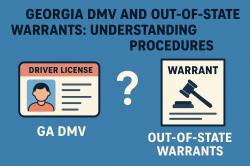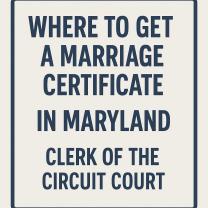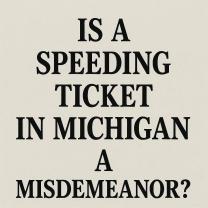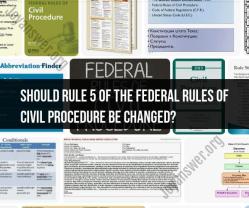How do you abbreviate in the Bluebook?
In legal writing, especially when citing cases, statutes, regulations, and legal texts, abbreviations are commonly used to save space and maintain a consistent style. The Bluebook: A Uniform System of Citation is a widely recognized style guide for legal citation in the United States. It provides specific guidelines for abbreviating legal references. Here are some key principles and rules for abbreviating in the Bluebook:
Using Standard Abbreviations:
- The Bluebook provides a list of standard abbreviations for case reporters, statutes, regulations, and other legal sources. It's important to follow these standard abbreviations whenever possible.
Case Names and Reporters:
- When citing court cases, you should abbreviate the name of the case and the reporter (i.e., the legal publication where the case is reported).
- For example, "Smith v. Jones" may be abbreviated as "Smith" in subsequent references.
- Case reporters like the "United States Reports" are typically abbreviated as "U.S."
Statutes and Regulations:
- When citing statutes and regulations, the Bluebook provides standard abbreviations for federal and state codes and administrative codes.
- For instance, the United States Code is abbreviated as "U.S.C.," and the Code of Federal Regulations is abbreviated as "C.F.R."
Court Names:
- When citing specific courts, you may use standard abbreviations. For example, "Supreme Court" can be abbreviated as "S. Ct.," and "Court of Appeals" can be abbreviated as "Ct. App."
Common Legal Phrases:
- Some common legal phrases have standardized abbreviations, such as "et seq." for "et sequens" (and the following) and "et al." for "et alia" (and others).
Internal Cross-References:
- When citing multiple internal cross-references within a legal document, you may use "Ibid." to refer to the same source as the immediately preceding citation.
Rule Numbers and Sections:
- Rule numbers and section numbers within legal documents are often abbreviated, such as "Rule 11" or "§ 3.02."
Specific Legal Citations:
- Be attentive to specific citation rules for different types of legal sources, including cases, statutes, regulations, law reviews, and court rules. The Bluebook provides guidance for each type.
Check Local Rules:
- In some cases, courts or jurisdictions may have local citation rules that differ from the Bluebook's guidelines. Always check and adhere to any local rules when applicable.
Clarity and Consistency:
- While abbreviations are commonly used in legal writing, clarity and consistency are crucial. Ensure that your abbreviations do not compromise the readability and understanding of your legal text.
It's essential to consult the latest edition of the Bluebook for specific rules and examples regarding legal citation and abbreviation. Legal citation styles can be complex and precise, so adhering to established guidelines helps ensure accuracy and professionalism in legal writing.
The Bluebook: A Uniform System of Citation is the standard reference guide for legal citation in the United States. It provides detailed rules on how to abbreviate words and phrases in legal writing.
Abbreviation Rules in the Bluebook: A Guide to Proper Usage
The Bluebook uses two methods of abbreviating words: contraction and scrunching.
- Contraction: The contraction method takes the first three letters of a word plus the last letter. An apostrophe is used before the last letter but no period. For example, "department" is abbreviated "dep't," not "dept."
- Scrunching: The scrunching method is used when various letters of the word are chosen as the abbreviation. Use a period at the end. For example, "building" is abbreviated "bldg."
The Bluebook also provides a list of abbreviations that should always be used in legal writing, such as "e.g." for "exempli gratia" and "i.e." for "id est."
Proper Abbreviation in Legal Writing: Following Bluebook Guidelines
It is important to follow the Bluebook's abbreviation rules when writing legal documents. This will help to ensure that your citations are accurate and consistent.
Here are some tips for using abbreviations in legal writing:
- Only abbreviate words and phrases that are listed in the Bluebook. If a word or phrase is not listed in the Bluebook, spell it out in full.
- Be consistent with your abbreviations. If you abbreviate a word or phrase in one place, abbreviate it the same way in other places throughout your document.
- Use abbreviations sparingly. Too many abbreviations can make your writing difficult to read and understand.
Streamlining Citations: Abbreviating in Accordance with the Bluebook
Using abbreviations in legal writing can help to streamline your citations and make them easier to read. For example, instead of writing "United States Court of Appeals for the Second Circuit," you can write "2d Cir."
However, it is important to use abbreviations carefully. If you are unsure whether to abbreviate a word or phrase, err on the side of caution and spell it out in full.
Here are some additional tips for abbreviating citations:
- Abbreviate court names. You can abbreviate the names of most courts, but be sure to check the Bluebook for the correct abbreviation.
- Abbreviate case names. You can abbreviate the names of cases that are cited multiple times in your document. However, be sure to spell out the full name of the case in the first citation.
- Abbreviate statutes and regulations. You can abbreviate the names of statutes and regulations, but be sure to check the Bluebook for the correct abbreviation.
By following these tips, you can use abbreviations to streamline your legal writing and make your citations easier to read.













